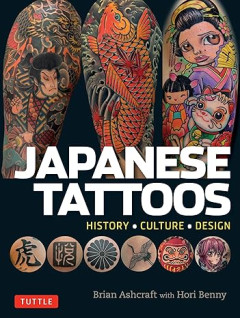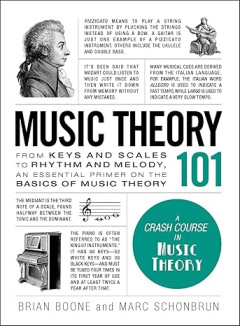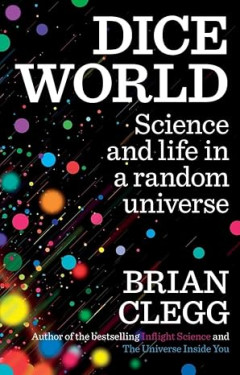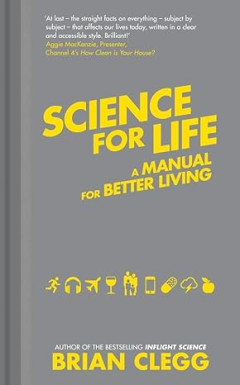Ditapis dengan

E-book Japanese Tattoos: History - Culture - Design
Japanese Tattoos explains the imagery featured in Japanese tattoos so that readers can avoid getting ink they don't understand or, worse, that they'll regret. This photo-heavy book also traces the history of Japanese tattooing, putting the iconography and kanji symbols in their proper context so readers will be better informed as to what they mean and have a deeper understanding of irezumi. Fea…
- Edisi
- -
- ISBN/ISSN
- 9784805313510
- Deskripsi Fisik
- 370 halaman, ilus.
- Judul Seri
- -
- No. Panggil
- 391 ASH j
E-book Consensus on Environmentally Sustainable Oral Healthcare : A Joint Sta…
Climate change and environmental pollution are among the greatest health threats affecting the planet, human-ity and biodiversity. This is recognised in the 2030 United Nations Agenda for Sustainable Development, which includes an urgent call for action from all sectors. The entire oral healthcare community, including clinical professionals and industry, recognises that we have …
- Edisi
- -
- ISBN/ISSN
- 9781912482443
- Deskripsi Fisik
- 71 hlm
- Judul Seri
- -
- No. Panggil
- 617.6 SHE c

E-book Ethics 101: From Altruism and Utilitarianism to Bioethics and Politica…
Ethics 101 offers an exciting look into the history of moral principles that dictate human behavior. Unlike traditional textbooks that overwhelm, this easy-to-read guide presents the key concepts of ethics in fun, straightforward lessons and exercises featuring only the most important facts, theories, and ideas. Ethics 101 includes unique, accessible elements such as: -Explanations of the ma…
- Edisi
- -
- ISBN/ISSN
- 9781507204931
- Deskripsi Fisik
- 256 halaman, ilus.
- Judul Seri
- -
- No. Panggil
- 170.0 BOO e

E-book Music Theory 101: From Keys and Scales to Rhythm and Melody, an Essent…
From classical to hard rock, and jazz to hip hop, music is constantly evolving, but many of the basics have stayed the same. Understanding these basics is key to becoming a successful musician and well-rounded music lover. Music Theory 101 covers everything novice musicians and lifelong learners need to know, including: -How to read sheet music -Understanding the construction of chords a…
- Edisi
- -
- ISBN/ISSN
- 9781507203668
- Deskripsi Fisik
- 276 halaman
- Judul Seri
- -
- No. Panggil
- 780.1 BOO m

E-book A Practical Guide to Sperm Analysis: Basic Andrology in Reproductive M…
This is a reference manual for daily use in the Reproductive Medicine or Andrology laboratory, which goes beyond the literature available in the scientific journals by compiling insights into a detailed and applied clinical approach. All established practitioners in Reproductive Medicine will find much of practical relevance about the latest insights into sperm selection and analysis.
- Edisi
- -
- ISBN/ISSN
- 9781498741514
- Deskripsi Fisik
- 279 halaman, ilus.
- Judul Seri
- -
- No. Panggil
- 612.6 GAR a

E-book Dice World: Science and Life in a Random Universe
The proof, at last, that we do all live in a random and irrational universe. For centuries scientists believed that the universe was a vast machine - with enough detail, you could predict exactly what would happen. Admittedly real life wasn't like that. But only, they argued, because we didn't have enough data to be certain. Then the cracks began to appear. It proved impossible to predict…
- Edisi
- -
- ISBN/ISSN
- 9781848315167
- Deskripsi Fisik
- 213 halaman
- Judul Seri
- -
- No. Panggil
- 500.0 CLE d

E-book What Colour is the Sun?: Mind-Bending Science Facts in the Solar Syste…
Why do your fingers go wrinkly in the bath? What kind of animal can have 21 limbs? Who would really win a fight between a T.Rex and Godzilla? Test your knowledge of all things scientific with the biggest, brightest and most mind-bending quiz book this side of the Big Bang. Featuring 100 brain-melting Q&As, with enlightening explanations provided throughout, this is the ultimate examination o…
- Edisi
- -
- ISBN/ISSN
- 9781785781223
- Deskripsi Fisik
- 240 halaman
- Judul Seri
- -
- No. Panggil
- 001.0 CLE w

E-book Science for Life: A Manual for Better Living
In Science for Life acclaimed science writer Brian Clegg cuts through the vested interests and confusing contradictory statements that litter the media and the internet, to give a clear picture of what science is telling us right now about changing our lives for the better. Discover the much-advertised antioxidants that aren't good for you, the truth about fat and sugar and why one of the he…
- Edisi
- -
- ISBN/ISSN
- 9781848318182
- Deskripsi Fisik
- 399 halalaman
- Judul Seri
- -
- No. Panggil
- 500.0 CLE s

E-book Are Numbers Real?: The Uncanny Relationships Between Maths and the Phy…
Have you ever wondered what humans did before numbers existed? How they organized their lives, traded goods, or kept track of their treasures? What would your life be like without them? Numbers began as simple representations of everyday things, but mathematics rapidly took on a life of its own, occupying a parallel virtual world. In Are Numbers Real? Brian Clegg explores the way that maths …
- Edisi
- -
- ISBN/ISSN
- 9781472139764
- Deskripsi Fisik
- 224 halaman, ilus.
- Judul Seri
- -
- No. Panggil
- 510.1 CLE a
E-book Ecology of Angola : Terrestrial Biomes and Ecoregions
Southwards from the Maiombe, and running from Cabinda to the Cunene, is the Angolan Escarpment. This major topographic buttress between the coastal lowlands, the Marginal Mountain Chain and the interior high plateau—the planalto—is of special ecological importance. Providing a steep gradient of landscapes and habitats between the arid coast and …
- Edisi
- -
- ISBN/ISSN
- 9783031189234
- Deskripsi Fisik
- 465 hlm
- Judul Seri
- -
- No. Panggil
- 577 HUN e
 Karya Umum
Karya Umum  Filsafat
Filsafat  Agama
Agama  Ilmu-ilmu Sosial
Ilmu-ilmu Sosial  Bahasa
Bahasa  Ilmu-ilmu Murni
Ilmu-ilmu Murni  Ilmu-ilmu Terapan
Ilmu-ilmu Terapan  Kesenian, Hiburan, dan Olahraga
Kesenian, Hiburan, dan Olahraga  Kesusastraan
Kesusastraan  Geografi dan Sejarah
Geografi dan Sejarah